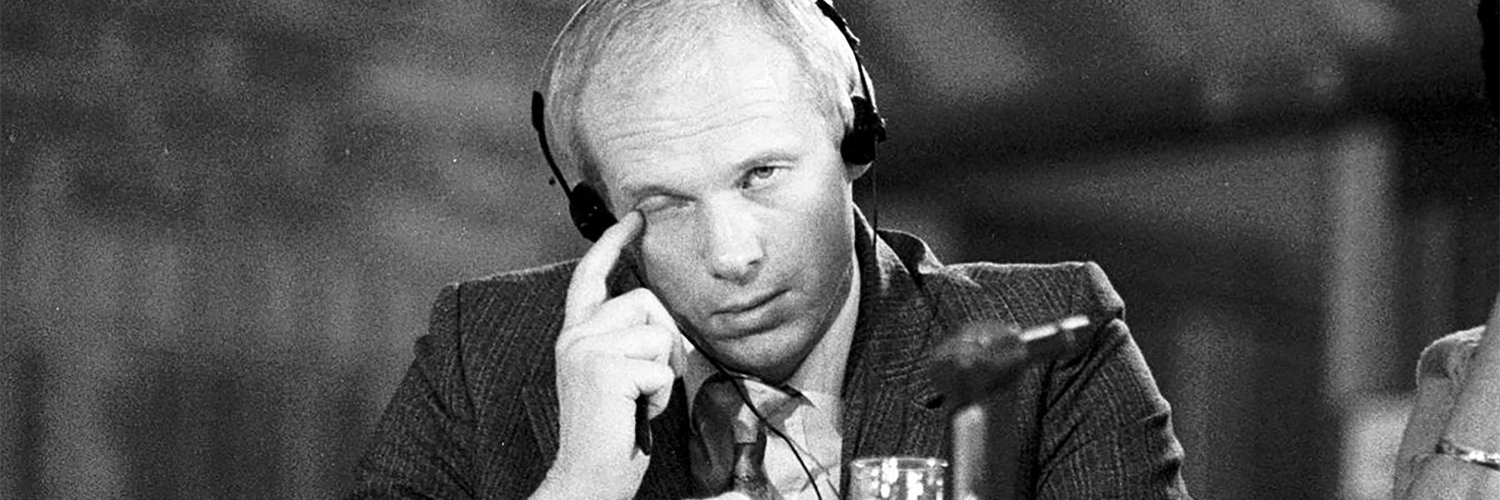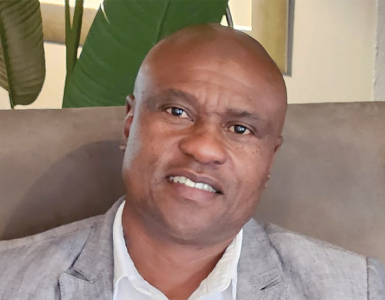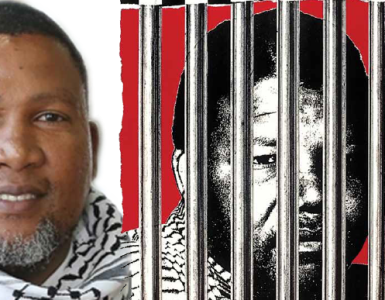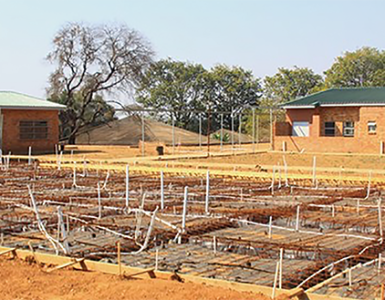QUESTIONS: Three decades have passed since former SACP leader Chris Hani’s death, yet his rightwing Polish executioner still contrives to control the narrative surrounding a sinister event that pushed a volatile South Africa to the brink …
By Monk Nkomo
A leopard never changes its spots, so goes the idiom. True to form and 31 years after his incarceration for the cold-blooded murder of SACP leader Chris Hani on that fateful day on April 10 1993, spoiling for a nationwide bloodshed, Janusz Walus again displayed peculiar traits of yesteryear – evasive, parsimonious with the truth, intransigent, bigoted, remorseless, nonchalant and cagey – during an exclusive interview with Enca’s Erika Larsen conducted in his native Poland recently.
It was as if he was on cue – this time a bit older, blue eyes still projecting that menacing stare, ever calculating, yet a little reticent compared to his brash younger and cockier self the nation witnessed during his trial and subsequent appearance before the Truth and Reconciliation Committee in the late 1990s.
In the TV interview with Enca which had raised hopes to shed new light on Hani’s assassination, yet still left many questions than answers as before, with Walus anything but candid, obtrusive, too shifty to be cornered by his interviewer. Worse, still defiant and unyielding to lingering questions that continue to mystify many South Africans to this day.
For its worth, the interview may have served to open long-healed wounds for the Hani family, his comrades and the rest of the nation than bring closure. Eerily, it evoked discomfort, bewilderment and frustration – not unlike his combative testimony to the panel at the Truth and Reconciliation amnesty hearings, which exposed him as a liar with a knack to evade questions, contradict himself – even to the point of raising the ire of one of the committee members – a senior judge – who rebuked him.
Records of the TRC hearings which were held from November 24 1997, where Walus was applying for amnesty for Hani’s murder in 1993, a year before the ushering of the democratic South Africa, revealed that Walus was asked during cross examination by counsel for the Hani family, George Bizos SC about a hit list which contained names of several high-profile personalities including former President Nelson Mandela. He denied having reconnoitred Mandela’s home in Houghton, Johannesburg and said he only drove past the house at around noon towards the end of 1992.
Asked how he knew where Mandela’s house was situated, he said it was on the hit list which was given to him by his partner-in-crime, Clive Derby Lewis, a senior member of the Conservative Party in February 1993 at the time. Walus could not explain how he would have sourced information about the house from a list which he had allegedly only received after his drive past the house.
“It is possible I made a mistake,” replied Walus. “I do not remember the date because this event was insignificant for me. That is why I did not mention the date correctly.’’
Bizos also exposed another lie from the murderer after he had at first told the hearing that he had driven past Mandela’s house at noon while on business around the area. He could not disclose the name of a single business he was visiting there.
Referring to one of the exhibits, Bizos read him a passage in which he (Walus) is quoted as saying : “All the reconnoitring of the houses of Mr Nelson Mandela and Mr Chris Hani were done at night.’’
Asked to explain this contradiction of saying he drove past the house at around noon and the reconnoitring at night, Walus had an easy way out. He did not remember saying that.
“Ask the person who wrote that,’’ he told Bizos. His tactic of evading questions eventually raised the ire of one of the committee members, Judge Bernard Ngoepe, who asked him how many people did he expect were going to die if their plan with Clive Derby- Lewis – that of causing chaos in South Africa – had he succeeded after he had murdered Hani.
The self- confessed killer gave a bizarre answer. He asked the judge to indicate to him how many people he thought would have been killed. The judge responded that he was not there when the planning was made and he therefore could not give an answer. Walus then told the Judge that he did not want him to misunderstand him but he wanted the Judge’s estimate of the number of people who would have died.
‘’ Mr Walus, please, do you want to answer the question or not ? Walus said he wanted to answer the question. Judge Ngoepe then snapped. ‘’ Mr. Walus, I do not care what you understand by many. Did you or did you not expect that many people would die? It is a very simple question. I am asking it for the last time. If you do not answer it, I will leave it.’’
Walus : ‘’ Yes, I expected that such a possibility existed.’’ Ngoepe then asked him why did he took so long and made him (judge) to struggle to get an answer to such a simple question. Walus said he believed a few hundred people would have died.“I apologise if I caused any misunderstanding.’’
During cross examination by Bizos , he was also questioned about his statement in which he said thepeople on the hit list who, besides, Hani and Mandela, also included Joe Slovo, Mac Maharaj , Judge Richard Goldstone and former cabinet minister Pik Botha should be eliminated after Hani’s murder. He had earlier testified that the list was of people who were regarded as enemies of the Conservative Party. Walus did not remember saying that. Their target with Clive Derby- Lewis was only Hani.
Bizos then brought him to the attention of his response to a question he was asked earlier during the hearings, in which he stated that others on the hit list could still be eliminated. ‘’ You are recorded as saying yes, they are bastards, the one is more dangerous than the other. Clive is a guy with balls, he will know what to do.’’
The applicant (Walus) denied having said that. ‘’ I do not remember I could have said such things’’. Bizos was relentless.
In another statement, Walus is quoted as saying that he and Clive Derby-Lewis became concerned when the ANC and SACP were unbanned. They found it unacceptable. “We then discussed in the direction of eliminating selective members of the ANC-SACP alliance”.
Walus could not remember.
Bizos : “Did you or did you not say that ? ”
Walus : “I could have told something to this affect. To quiet a degree, that is the truth.’’
The TRC also found that the explanation that the hit list was of people who were enemies by the Conservative Party, was false. There was no reason to have a list with a number of addresses and only one person, Hani, was to be attacked.
Adv. Mokotedi Mpshe, the TRC evidence leader, also poked holes in Walus’ evidence regarding the hit list he claimed he had received from Clive Derby-Lewis. He referred the killer to one of the paragraphs in his application for amnesty in which he (Walus), while at the Derby- Lewis home in Krugersdorp, asked if he could take the hit list which was placed on a glass table. Clive Derby-Lewis had agreed that he could take it as long as he brought it back. This contradicted his earlier evidence that he was given the list by Clive Derby-Lewis.
“This point is correct,’’ Walus responded. After claiming that some parts of his statements were not truthful, Walus however failed to declare which parts were those. “I cannot recall anything at the moment.’’
Asked by Bizos if he had achieved anything by murdering Hani either politically or personally or if his action resulted in a wasted life, the waste caused by him, Walus responded : “I cannot answer this question because history can further show what happened and also we cannot foresee …….It is difficult to say anything.
“Surely, the feelings of killing are not pleasant and nothing positive comes from that.’’ Bizos : “I would have expected you to show some remorse in answer to that question and not leaving it for history to possibly justify your act.’’
Walus then strangely asked why Bizos wanted him to show remorse. “I would have expected some remorse and not a sense of bravado still in your answer that history will judge the act,’’ Bizos pressed further. The TRC, in refusing Walus the amnesty, also found that his version that he only drove past
Mandela’s house was false. He did reconnoitre Mandela’s house after the former President was identified as the first target on the hit list.
“This conduct is consistent with a plan to attack more persons than just Mr Hani which, in turn, fits perfectly into the applicant’s plan to create chaos in the country.’’
Bizos, in closing arguments described Walus as part of a group of fanatics whose action was beyond pale as there was nothing happening in the country at the time that entitled him to react by killing a top leader like Hani.





























